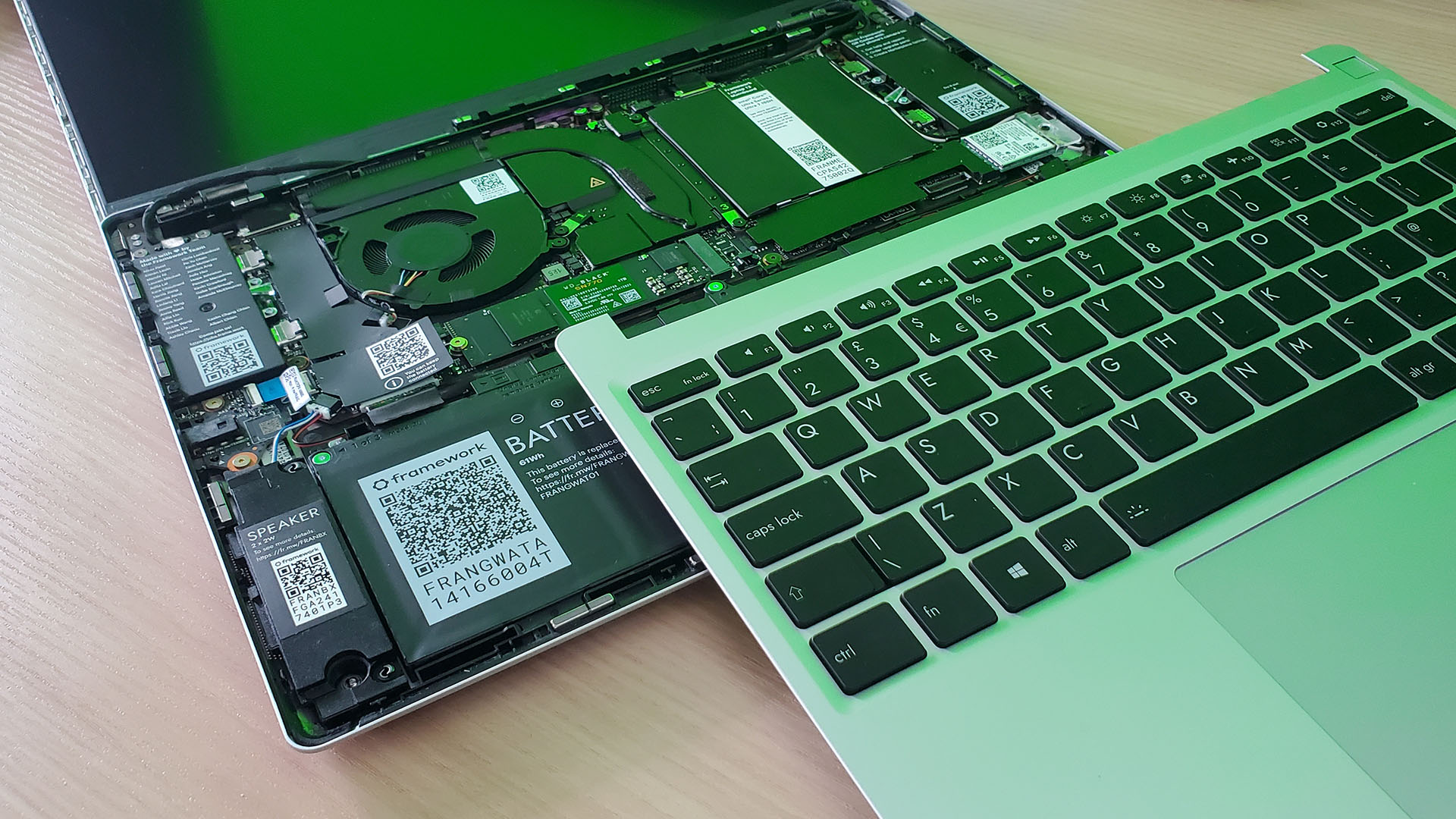No other laptop maker would let me cannibalise the best bit of its new machine the way Framework does and that's a damned shame
The new Framework laptop display is exactly why I love its products.


This month I have been mostly flapping about with new laptops, from upgradeable Intel Core Ultra devices to Snapdragon Elite machines. And dealing with Jacob's complaints about the grim state of the office, which admittedly is entirely my fault.
I did not love the new Framework 13 laptop. The latest machine to come from the only company to put repairability and upgradeability at the forefront of its laptop design, sports the new Intel Meteor Lake mainboard, the Core Ultra Series 1. And, honestly, that new Intel chip doesn't really do a whole lot for the Framework 13 as a whole.
Sure, you get better battery life and improved fan noise, but its performance lags behind both the impressive AMD Ryzen version it released last year and the even older Intel 13th Gen model, too. Because of that, I'm going back to the old AMD Framework 13 I've been using since it first landed in the PCG test lab. Well, I say 'lab', but what I really mean is the grubby, tech-strewn corner of the office I call my own, but that's beside the point.
Having said all that, there is one thing I wish the Ryzen Framework had that arrived alongside the new Intel Core Ultra Series 1 version: The new system came with an updated, higher resolution, high refresh rate display.
And, because of the way Framework operates, I don't need to just wish. I can whip out a screwdriver and mercilessly cannibalise the hapless laptop. And it's why I love the Framework 13 and the way this company handles its business.
I can whip out a screwdriver and mercilessly cannibalise the hapless laptop.
There is no other laptop manufacturer on the planet where you could have bought a machine three years ago, with four-generation-old hardware inside it, and then it releases a new laptop with a much better screen and you can easily slot that into your effectively ancient device.
I don't know of any other manufacturer that would let you do that, let alone sell the panel on its own marketplace for $269.
That's the situation here with the Framework 13. I picked up this Ship of Theseus in 2022 with an original Intel 11th Gen CPU inside it. And I could have changed nothing and, still using the same screwdriver which came with that first device, simply removed the improved screen from the new laptop and plopped it into this old one in maybe 10 minutes and have it just work the instant it was powered on.
The biggest gaming news, reviews and hardware deals
Keep up to date with the most important stories and the best deals, as picked by the PC Gamer team.
As it happens, I have actually changed a whole lot of things in this laptop since first getting hold of the Framework 13. I've changed out the mainboard multiple times, settling now with the excellent Ryzen 7 7840U board, swapped memory, Wi-Fi module, and battery. And now I'm definitely going to change over that screen because it's been my one persistent issue with the otherwise excellent laptop.
The older screen has a pretty poor response time and its 60 Hz refresh rate doesn't help dissipate the detail-smear you get when playing games on it. The new 120 Hz screen isn't perfect, but then I've been spoiled by expensive 240 Hz OLED panels recently, and this is still very much an improvement. I would urge any Framework 13 owners to make the upgrade, especially as it's an incredibly simple upgrade to make.
You probably wouldn't think changing over an entire laptop panel would be either quick or straightforward, but I can swap the panel out in literally five minutes. It's a hell of a thing. Just watch...
@pcgamer_mag ♬ Natural Emotions - Muspace Lofi

Dave has been gaming since the days of Zaxxon and Lady Bug on the Colecovision, and code books for the Commodore Vic 20 (Death Race 2000!). He built his first gaming PC at the tender age of 16, and finally finished bug-fixing the Cyrix-based system around a year later. When he dropped it out of the window. He first started writing for Official PlayStation Magazine and Xbox World many decades ago, then moved onto PC Format full-time, then PC Gamer, TechRadar, and T3 among others. Now he's back, writing about the nightmarish graphics card market, CPUs with more cores than sense, gaming laptops hotter than the sun, and SSDs more capacious than a Cybertruck.

